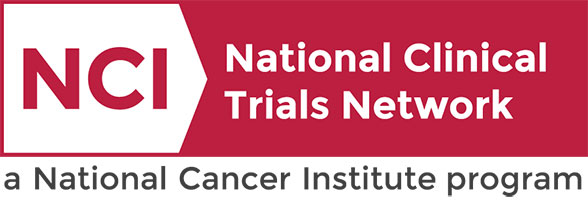Low blood cell counts drive cancer in explosive blood disorder: study
One person in 10 over the age of 70 will experience an explosive, clonal growth of abnormal blood cells, called clonal hematopoiesis of indeterminant potential or CHIP, that increases the risk of blood cancer and death from cardiovascular, lung and liver disease.
The risk of blood cancer differs significantly, however, depending upon whether patients with CHIP also develop cytopenia (low blood cell count).
An analysis of genetic sequencing data from more than 34,000 people over a 17-year period by researchers at Vanderbilt University Medical Center has found that persistent cytopenia appears to be a critical step in the progression of CHIP to blood cancer.
For patients with CHIP who developed cytopenia, the risk of progression to blood cancer was 10 times higher than it was for patients without cytopenia — a 1-in-200 chance per year versus 1 in 2,000, the researchers report in the June 2025 issue of the Lancet journal, eClinicalMedicine.
These findings suggest that checking blood counts regularly may be an effective way to monitor patients with CHIP for their risk of developing blood cancer, and cytopenia-free survival may be a valuable endpoint for clinical trials aimed at preventing blood cancer in these patients.

“This work is the largest longitudinal analysis of its kind and provides a roadmap for identifying high-risk CHIP patients who may benefit from closer monitoring or early intervention,” said the paper’s corresponding author, Alexander Bick, MD, PhD, associate professor of Medicine and director of the Division of Genetic Medicine at VUMC.
“It also lays the groundwork for more feasible and targeted clinical trials in blood cancer prevention,” he said.
Bick is internationally known for his research on the genetics of blood disorders. He and his colleagues have advanced the understanding of somatic (non-inherited) mutations in blood stem cells that can trigger a potentially life-threatening clonal growth of abnormal cells known as CHIP.
Blood cancer (myeloid neoplasm) results from the abnormal growth of myeloid (blood) cells in the bone marrow. The current study compared blood cancer rates in patients with CHIP who did not develop cytopenia, to those with both CHIP and concurrent, clonal cytopenia of undetermined significance.
Led by the paper’s first authors, James Brogan, MD, MS, a resident physician in the Department of Medicine, and Ashwin Kishtagari, MD, assistant professor of Medicine in the Division of Hematology and Oncology, the study required large numbers.
The researchers pulled genetic sequencing data from three major population-level cohorts: the National Institutes of Health (NIH) All of Us Research Program, the UK (United Kingdom) Biobank and VUMC’s biobank, BioVU.
With roughly 350,000 DNA samples collected to date, BioVU is the world’s largest repository of genetic material linked to de-identified electronic health records (EHRs) based at a single academic center.
Access to whole genome sequences linked to EHRs for more than 107,000 adults enrolled in BioVU between 2006 and 2023 was provided through the Alliance for Genomic Discovery (AGD), a unique endeavor to accelerate the application of large-scale genomics to biomedical science and therapeutic development.
Launched in 2022 by Nashville Biosciences LLC, a wholly owned VUMC subsidiary, and the global DNA sequencing giant Illumina Inc., AGD now includes eight major pharmaceutical companies that support the development and availability of whole genome sequences for research aimed at identifying disease associations and targets for intervention.
The report in eClinicalMedicine “is one of the first papers to leverage data from the BioVU/Alliance for Genomic Discovery whole genome sequencing effort,” Bick said. “It also highlights how at VUMC medical trainees are doing cutting-edge research while developing as physicians.”
Between the three biobanks, the researchers had access to 805,000 whole genome sequences. From this pool, they identified 8,114 individuals with CHIP who did not develop cytopenia and 1,260 who did. These 9,374 cases were matched with 24,749 controls who did not have CHIP.
The annual blood cancer progression rate for participants with CHIP who did not develop cytopenia was nearly the same as the rate observed in the control population without CHIP (0.06% versus 0.04%), whereas the rate was 10 times higher for those with both CHIP and cytopenia (0.5% per year).
Approximately 13% of participants with CHIP developed a cytopenia within five years. Men, smokers and older individuals (over 64) were at a higher risk of developing cytopenia, as were those who had two or more mutations or any high-risk mutations associated with CHIP.
“Given the substantial risk of cytopenia, patients with multiple high-risk features may benefit from regular monitoring for cytopenia progression,” the researchers concluded. The good news is that this five-year window before the development of cytopenia and blood cancer “provides an opportunity for early intervention with potential disease-modifying therapies,” they wrote.
Treatments for cytopenia range from drugs that stimulate the production of certain blood cell types to bone marrow or stem cell transplants.
Co-authors from the Bick lab included rheumatology fellow Robert Corty, MD, PhD, Yash Pershad, an MD-PhD student, and Brian Sharber, MS. Other VUMC co-authors included faculty members Brett Heimlich, MD, PhD, Leo Luo, MD, Brent Ferrell Jr., MD, Michael Savona, MD, and Yaomin Xu, PhD.
This research was supported by NIH grants DP5OD029586, R01AG088657, R01AG083736, and P30CA068485, the Burroughs Wellcome Fund Career Award for Medical Scientists, the Edward P. Evans Foundation, and the Pew Charitable Trusts and the Alexander and Margaret Stewart Trust.
Savona holds the Beverly and George Rawlings Directorship. Bick is supported in part by a Hevolution/AFAR New Investigator Award in Aging Biology and Geroscience Research, and Brogan is supported in part by an American Society of Hematology HONORS Award.
The post Low blood cell counts drive cancer in explosive blood disorder: study appeared first on VUMC News.
Data from fluorescence imaging can improve outcomes in head and neck cancer surgery: study
A study published in the journal JAMA Surgery demonstrated the benefits of using fluorescence-guided imaging to assess margins in head and neck cancer. Researchers at Vanderbilt University Medical Center found that leveraging data collected both during surgery (in vivo) and after the tumor’s removal (ex vivo) can help guide surgeons in achieving a negative margin in cancer resection.
A margin refers to the areas around the tumor being removed. The desirable outcome is to complete surgery with a negative margin, indicating that no cancer was found at the edge of the resection. A positive margin indicates that cancer cells remain in the tissue, which increases the risk of recurrence and reduces the chance of survival.
To assess those margins, surgeons may use fluorescent agents administered to the patient’s tissue. Systemically infused agents have been shown to differentiate cancerous and healthy tissue with high accuracy.
“Our research found that the use of fluorescence imaging both internally and externally can improve surgeons’ ability to precisely and safely excise tumors,” said Shravan Gowrishankar, MD, a research fellow in the Department of Otolaryngology-Head and Neck Surgery and the study’s first author. “This research seeks to illuminate methods of leveraging fluorescence imaging to achieve negative margins, particularly for deep resections, which often prove difficult.”

The researchers defined two classifications of margins: the superficial or mucosal margin refers to the area uninvolved with the tumor but surrounding its surface, while the deep margin refers to the 4 to 5 millimeters of healthy tissue beyond the tumor’s most invasive points, or the depth of normal tissue between the tumor edge and the cut surface of the specimen.
“Currently, it’s easier to achieve negative mucosal margins than deep margins,” said corresponding author Eben Rosenthal, MD, chair of the Department of Otolaryngology-Head and Neck Surgery and Barry and Amy Baker Professor of Laryngeal, Head and Neck Research. “Deep margins aren’t able to be assessed as easily because surgeons must rely on estimation of the distance from the tumor to guide the resection.
“We sought to improve methods of achieving negative margins across the board because estimation isn’t good enough where patient safety is concerned.”
The assessment of deeper margins is further confounded during surgery by tissue retraction and the presence of blood, which can obscure the view of the surgeon. And while autofluorescence — a process by which naturally occurring chemicals in the tissue can absorb light of a particular wavelength and reemit it at a different wavelength — can help surgeons assess mucosal margins, deeper margins are impossible to assess via this process because the light does not penetrate beyond a millimeter.
To assist in ensuring a negative margin in a deep resection, surgeons can use fluorescence imaging techniques. Mapping tumors after resection can provide data on how close the margins are to the surface of the deep resection, and intraoperative in vivo fluorescence imaging can reveal areas of residual disease in the tumor bed. In combination, the information provided by both methods of fluorescence imaging can guide further examination and sampling to help achieve fuller resection of the deep margin.
While both methods in combination are critical to achieving better outcomes in surgery, said Gowrishankar, ex vivo imaging devices have certain advantages over in vivo hardware.

“While the data we get from in vivo imaging is valuable, it’s largely qualitative because of variance in ambient light in the operating room,” said Gowrishankar. “Ex vivo imaging is more precise because we can seal out external light in a controlled environment to measure fluorescence intensity and guide our assessment of deep margins.”
In ex vivo imaging, fluorescence intensity increases the closer the tumor tissue approaches the cut surface of the tumor specimen, and data from this measurement can be used to create a sort of “heat map” measuring the relative depth of the tumor across the entire specimen. By using this imaging technique, surgeons can more precisely detect the reach of cancer cells in the tissue and perform precise resections.
“Mucosal margins are easy enough to detect during surgery without fluorescent agents, but those agents are critical in helping us close the gap with deep margins,” said Rosenthal. “Missed deep margins contribute to the majority of positive margins after resection, which in turn contribute to negative health outcomes for patients. Large-scale adoption of these techniques will have a meaningful impact on the health of patients who undergo surgery to remove cancerous tumors.”
Additional authors from Vanderbilt University Medical Center include:
- Jennifer Choe, MD, PhD, assistant professor of Medicine in the Division of Hematology Oncology
- Alexander Langerman, MD, SM, FACS, associate professor of Otolaryngology-Head and Neck Surgery
- Kyle Mannion, MD, FACS, associate professor of Otolaryngology-Head and Neck Surgery
- Aviva S. Mattingly, MD, MS, VTOPS/R25 Research Resident
- Sarah L. Rohde, MD, MMHC, associate professor of Otolaryngology-Head and Neck Surgery and division director of Head and Neck Oncologic Surgery
- Robert Sinard, MD, FACS, professor of Otolaryngology-Head and Neck Surgery
- Hidenori Tanaka, MD, PhD, visiting assistant professor of Otolaryngology-Head and Neck Surgery
- Michael Topf, MD, MSCI, assistant professor of Otolaryngology-Head and Neck Surgery.
This research was supported by the National Cancer Institute, part of the National Institutes of Health (grants R01CA279249, R01CA239257, R01CA266233 and R01CA238686).
The post Data from fluorescence imaging can improve outcomes in head and neck cancer surgery: study appeared first on VUMC News.



